Kevin Nolan has been no stranger to farm technology, with many readers following his progress over the years. I first visited Kevin’s farm in 2014 and it’s clear to see much has changed since then. However, these changes don’t just extend to new technology and kit, but also to his general outlook.
Over the past number of years, he has spent a great deal of effort positioning the business to cope with the impending challenges down the line.
Kevin farms around 1,250ac of crops near Grangeford, Co Carlow.
His land base is a combination of owned, share-farmed and leased land. Kevin believes that future growth lies in land leasing and has devised new models to develop this.
He grows barley, wheat, oats, beans, potatoes and maize.
He employs one full-time employee plus two students on three-month placements. Seventy per cent of the ground is ploughed while the remained is min-tilled.
Kevin joined the Teagasc BETTER Crop Programme in 2015. This focuses on precision farming and now is in his final year of the programme.
Precision tech
“Precision farming is putting the right product where it needs to be. It’s about being efficient.” This is Kevin’s definition of precision farming and has guided his investment decisions on technology over the years. Some of the technologies used on the farm include:
2008: Kevin first started using the John Deere universal autosteer kit with an SF2 receiver which is accurate down to 5cm. He used it for cultivation and occasionally sowing.
2017: First trialled the Claas Isaria sensor, which measures the quantity of nitrogen (N) that has already been absorbed by the crop, compares this with the N target for that stage and then calculates the missing nutrient difference. The application rate in the spreader is then automatically adjusted. The system can then link into the sprayer when spraying PGR. Kevin also started using Claas telematics to record yield and machine output that year.
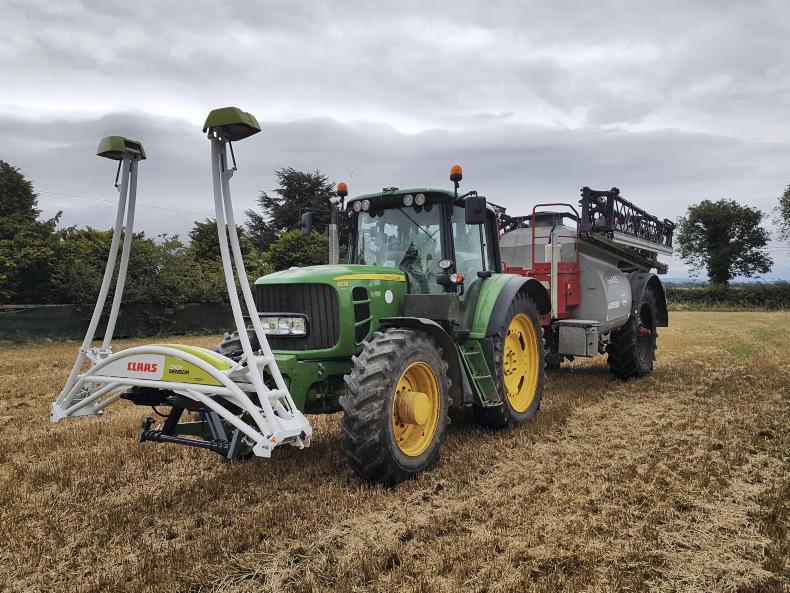
The front-mounted Claas Isaria sensor.
2018: Upgraded to a 36m 8,000l Horsch GS8000 sprayer which was purchased through TAMS. The fully GPS enabled sprayer increased his spraying capacity significantly. He also upgraded to full RTK auto steer on his Fendt 828, which improves accuracy down to 2cm.
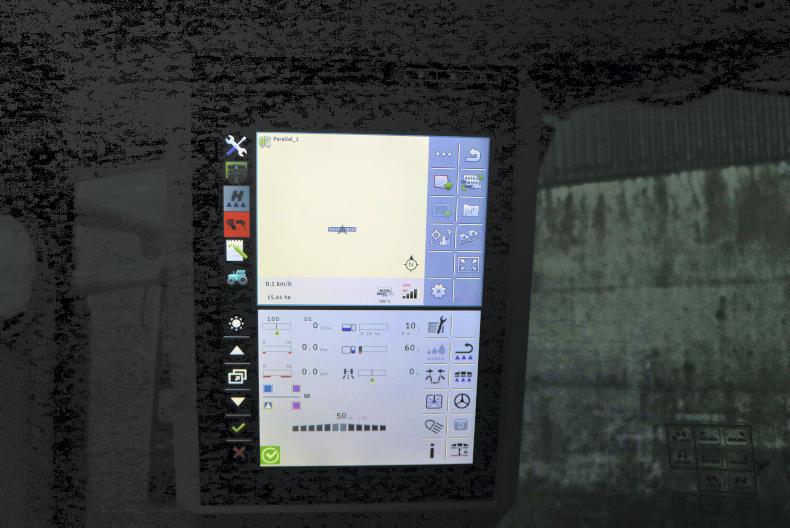
The GPS disply of this Horsch sprayer.
BETTER Crop Programme
Like the rest of the growers involved with the programme, Kevin was approached by Teagasc to join.
The main aim was to make every acre achieve its maximum potential through minimising field variability.
Kevin’s farm management strategy was very different in 2015. For example, back then his rotation was driven purely by achieving the maximum crop margin and, as a result, rotations tended to be shorter.
Some years rotations just consisted of winter oilseed rape and winter wheat, as these were the most profitable crops.
“This led to huge pressure points developing with so much of the area sown to the one crop,” Kevin explains.
This meant his business was exposed to a high level of risk, should the weather turn.
Also, before joining the programme, Kevin baled all of his own straw which only added to the workload at harvest. Accessing skilled labour was also an issue. This added to the stress at harvest time. At the time, Kevin was incorporating treated sludge but he admits it could have been more targeted. As well as learning to manage variability, Kevin sought to use the expertise of Teagasc to address some of these issues. Throughout the years, some of the measures done by Teagasc on his farm were:
2015: Year one, field work consisted of plant counts, worm counts, soil structure analysis and intensive soil sampling in one field at the home farm. They also used a drone equipped with sensors to scan the field and create a variable rate N map for his Amazone spreader. When applying the fertiliser, the N application rate was spreading from 100kg/ha to 300kg/ha.
2016: They decided to move to a leased block where there was greater variability. The field was split into four areas and the same measurements were conducted. They also began work on how to restructure the way Kevin dealt with straw at harvest time.
2017: All of the above measurements were repeated as well as measurements on soil compaction. There was also much more emphasis placed on developing his rotations, working with his adviser Phelim McDonald. They also worked on understand how better to use organic manures in rotations and looked into using poultry layers manure.
2018: Similar field measurements were taken in 2018 but with more intensive work done on headlands and compaction. Further work was done on developing rotations, organic manure use, as well as working on a new collaborative model with a local potato grower to grow the business. Throughout the years, there have also been several farm walks.
Programme outcomes
Kevin explains how having various specialists examine his business has been very positive. “There were many ideas suggested by the team, many were turned into real changes,” he remarks.
While it is too early to see the real impacts at field level, Kevin believes he is now in a better position to deal with field variability given the knowledge he has gained from the programme. Technology will continue to play an important role in this. But there have been many other positive changes made to the farm as a result of the programme. A large part of the risk has been taken out of his rotation through increasing the amount of crops grown. “Overall our rotation will lead to a better five-year average,” he says.
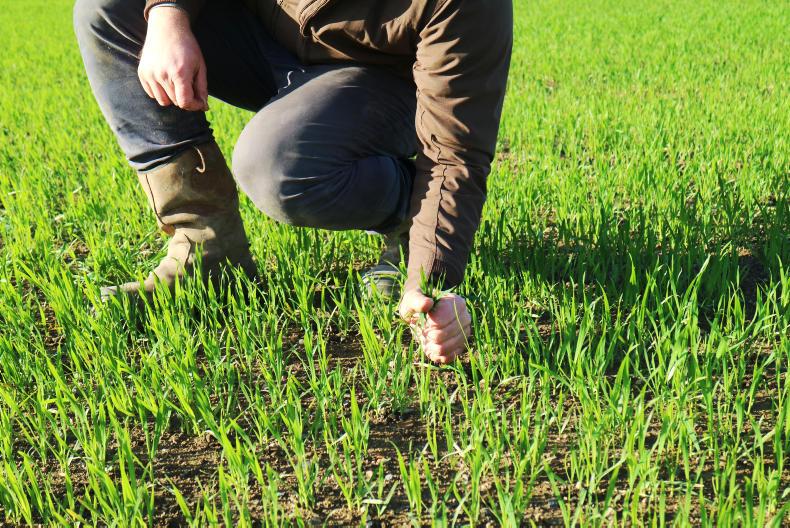
Kevin Nolan inspects his cop of winter oats.
He is now using organic manures in a much more targeted and balanced manner and believes that organic manures are particularly well placed in front of break crops. Kevin has also fully outsourced the baling and chasing of his straw which has allowed him to concentrate his efforts and labour on combining at harvest time, he explains.
He believes technology will continue to play a vital role in the future sustainability of his business. However, he still feels there is a missing link. Kevin believes variable rate seed and fertiliser placement will be an area he will move into in the near future.
“This is where the future is, planting more, where it’s needed and less where it isn’t,” he explains.
Kevin believes the changes made to his farm and the further investment in technology have improved his quality of living.
For example, with the extra output from the sprayer, he can afford to take most Sundays off, which is used for family time.
He’s also spending more time focusing on his health and has started going to the gym more.
“Farmers mind everything so well but tend to overlook their own health,” he remarks.
“Over the years the business grew rapidly, sometimes too quick. I remember years where we went up over 300 acres in one go it was doable but created a lot of stress,” Kevin remarks. He now feels that his business is more sustainable.
Read more
Boortmalt offers €190/t to farmers
Seed supply could hamper 2019 EU potato area
Kevin Nolan has been no stranger to farm technology, with many readers following his progress over the years. I first visited Kevin’s farm in 2014 and it’s clear to see much has changed since then. However, these changes don’t just extend to new technology and kit, but also to his general outlook.
Over the past number of years, he has spent a great deal of effort positioning the business to cope with the impending challenges down the line.
Kevin farms around 1,250ac of crops near Grangeford, Co Carlow.
His land base is a combination of owned, share-farmed and leased land. Kevin believes that future growth lies in land leasing and has devised new models to develop this.
He grows barley, wheat, oats, beans, potatoes and maize.
He employs one full-time employee plus two students on three-month placements. Seventy per cent of the ground is ploughed while the remained is min-tilled.
Kevin joined the Teagasc BETTER Crop Programme in 2015. This focuses on precision farming and now is in his final year of the programme.
Precision tech
“Precision farming is putting the right product where it needs to be. It’s about being efficient.” This is Kevin’s definition of precision farming and has guided his investment decisions on technology over the years. Some of the technologies used on the farm include:
2008: Kevin first started using the John Deere universal autosteer kit with an SF2 receiver which is accurate down to 5cm. He used it for cultivation and occasionally sowing.
2017: First trialled the Claas Isaria sensor, which measures the quantity of nitrogen (N) that has already been absorbed by the crop, compares this with the N target for that stage and then calculates the missing nutrient difference. The application rate in the spreader is then automatically adjusted. The system can then link into the sprayer when spraying PGR. Kevin also started using Claas telematics to record yield and machine output that year.

The front-mounted Claas Isaria sensor.
2018: Upgraded to a 36m 8,000l Horsch GS8000 sprayer which was purchased through TAMS. The fully GPS enabled sprayer increased his spraying capacity significantly. He also upgraded to full RTK auto steer on his Fendt 828, which improves accuracy down to 2cm.

The GPS disply of this Horsch sprayer.
BETTER Crop Programme
Like the rest of the growers involved with the programme, Kevin was approached by Teagasc to join.
The main aim was to make every acre achieve its maximum potential through minimising field variability.
Kevin’s farm management strategy was very different in 2015. For example, back then his rotation was driven purely by achieving the maximum crop margin and, as a result, rotations tended to be shorter.
Some years rotations just consisted of winter oilseed rape and winter wheat, as these were the most profitable crops.
“This led to huge pressure points developing with so much of the area sown to the one crop,” Kevin explains.
This meant his business was exposed to a high level of risk, should the weather turn.
Also, before joining the programme, Kevin baled all of his own straw which only added to the workload at harvest. Accessing skilled labour was also an issue. This added to the stress at harvest time. At the time, Kevin was incorporating treated sludge but he admits it could have been more targeted. As well as learning to manage variability, Kevin sought to use the expertise of Teagasc to address some of these issues. Throughout the years, some of the measures done by Teagasc on his farm were:
2015: Year one, field work consisted of plant counts, worm counts, soil structure analysis and intensive soil sampling in one field at the home farm. They also used a drone equipped with sensors to scan the field and create a variable rate N map for his Amazone spreader. When applying the fertiliser, the N application rate was spreading from 100kg/ha to 300kg/ha.
2016: They decided to move to a leased block where there was greater variability. The field was split into four areas and the same measurements were conducted. They also began work on how to restructure the way Kevin dealt with straw at harvest time.
2017: All of the above measurements were repeated as well as measurements on soil compaction. There was also much more emphasis placed on developing his rotations, working with his adviser Phelim McDonald. They also worked on understand how better to use organic manures in rotations and looked into using poultry layers manure.
2018: Similar field measurements were taken in 2018 but with more intensive work done on headlands and compaction. Further work was done on developing rotations, organic manure use, as well as working on a new collaborative model with a local potato grower to grow the business. Throughout the years, there have also been several farm walks.
Programme outcomes
Kevin explains how having various specialists examine his business has been very positive. “There were many ideas suggested by the team, many were turned into real changes,” he remarks.
While it is too early to see the real impacts at field level, Kevin believes he is now in a better position to deal with field variability given the knowledge he has gained from the programme. Technology will continue to play an important role in this. But there have been many other positive changes made to the farm as a result of the programme. A large part of the risk has been taken out of his rotation through increasing the amount of crops grown. “Overall our rotation will lead to a better five-year average,” he says.

Kevin Nolan inspects his cop of winter oats.
He is now using organic manures in a much more targeted and balanced manner and believes that organic manures are particularly well placed in front of break crops. Kevin has also fully outsourced the baling and chasing of his straw which has allowed him to concentrate his efforts and labour on combining at harvest time, he explains.
He believes technology will continue to play a vital role in the future sustainability of his business. However, he still feels there is a missing link. Kevin believes variable rate seed and fertiliser placement will be an area he will move into in the near future.
“This is where the future is, planting more, where it’s needed and less where it isn’t,” he explains.
Kevin believes the changes made to his farm and the further investment in technology have improved his quality of living.
For example, with the extra output from the sprayer, he can afford to take most Sundays off, which is used for family time.
He’s also spending more time focusing on his health and has started going to the gym more.
“Farmers mind everything so well but tend to overlook their own health,” he remarks.
“Over the years the business grew rapidly, sometimes too quick. I remember years where we went up over 300 acres in one go it was doable but created a lot of stress,” Kevin remarks. He now feels that his business is more sustainable.
Read more
Boortmalt offers €190/t to farmers
Seed supply could hamper 2019 EU potato area







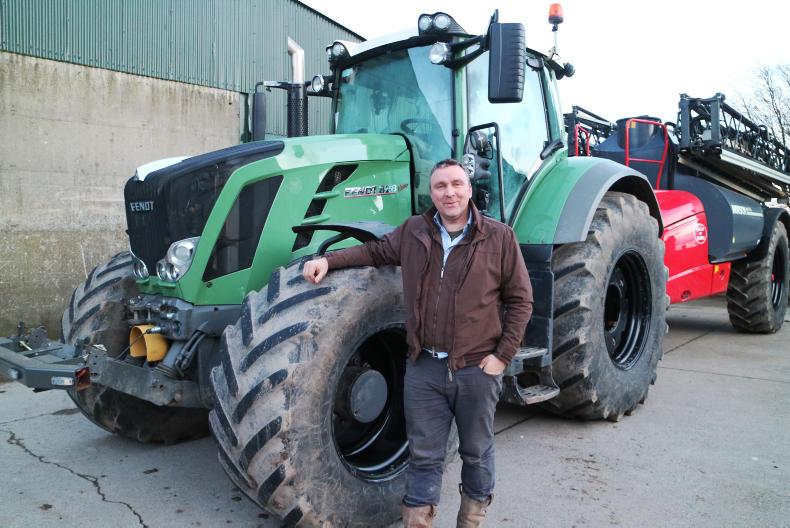
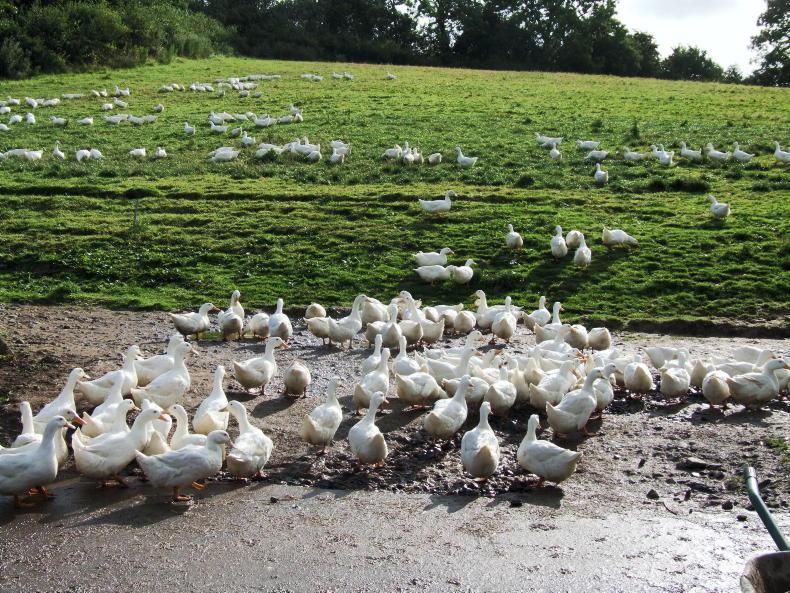

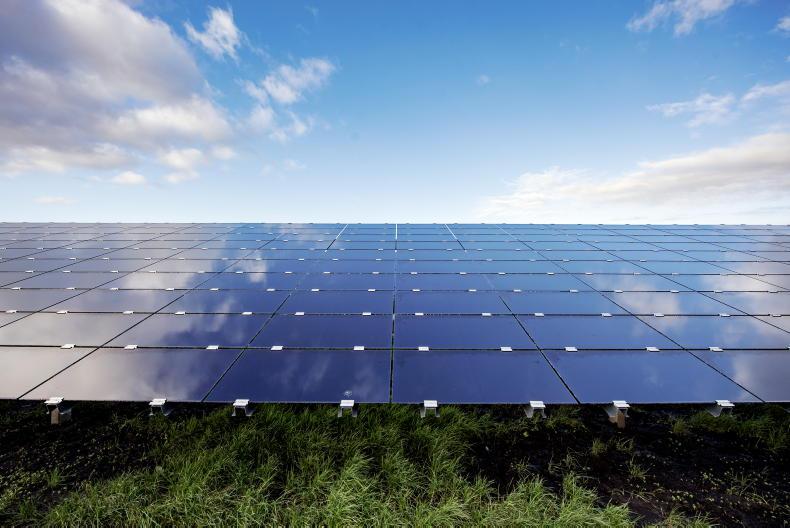

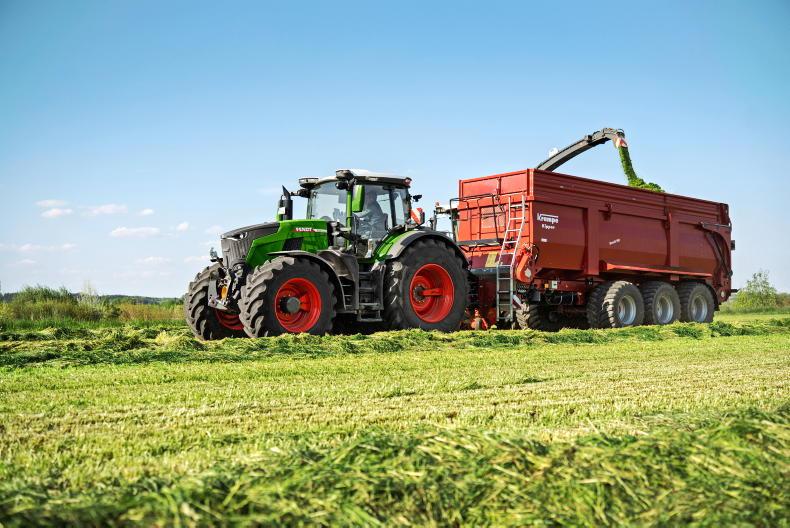
SHARING OPTIONS